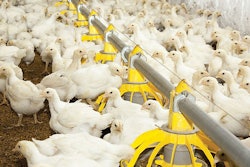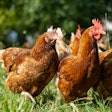
Premixes ensure feed manufacturers safe and consistent inclusions of trace minerals, medications, vitamins, additives and supplements.
Read the entire report about livestock premixes exclusively in the February issue of Feed Strategy.
In the years ahead, the global premix industry is poised for growth. According to market research firm Mordor Intelligence, the global animal feed premix market is set to reach an estimated value of $27.53 billion by 2022.
Beyond the requirements of animal health and productivity, market forces are influencing premix formulations and manufacturing.
“The premix industry will no longer be relevant with simple blending facilities and basic formulation support services,” says Adriano Marcon, group director, Cargill Animal Nutrition. “On the manufacturing side, in order to ensure the highest level of nutrient accuracy, blending precision and absence of cross contamination, line and facility segregation is required in addition to new production technologies like RFID, barcoding and micro-dosing automation. On the service side, as customers evolve and build their own nutrition capabilities, service innovation is required to add distinctive value.”
Consumers are demanding to know more about food production and safety, an interest that has trickled down to affect the role of the premix manufacturer.
“The market is increasingly being driven by consumer choices and preferences,” says Tom Taylor, managing director for Cargill’s U.S. premix and nutrition Provimi business. “In the United States, customer requirements for how we manufacture premix are evolving.”
In addition to the elimination of antibiotics for growth promotion (AGPs), consumers seek more “natural, wholesome and sustainable” options for their own diets, which will continue to influence how food animals are fed.
As consumers embrace no-antibiotics-ever meats and products, the need for alternative solutions is further amplified for livestock producers when they are faced with environmental pressures, such as weather fluctuations, density and health stressors, Taylor said.


















